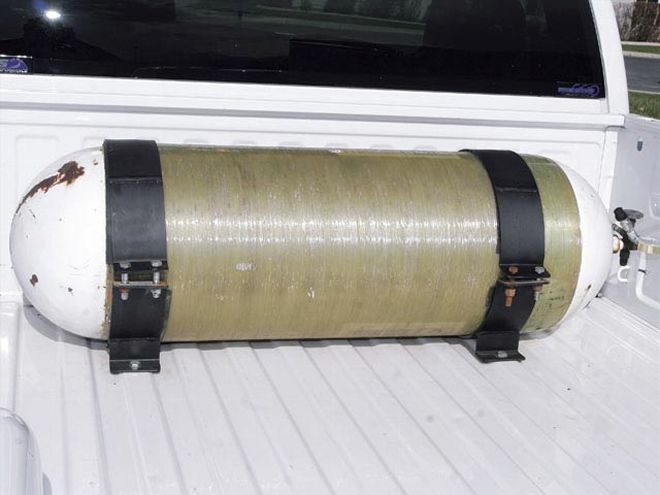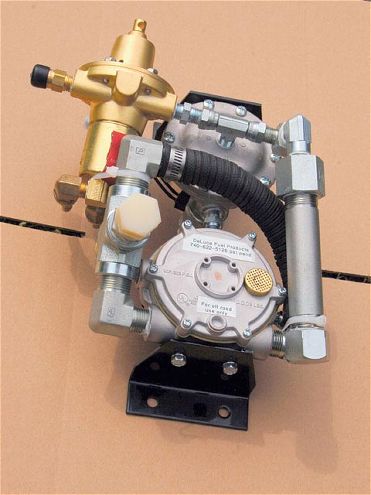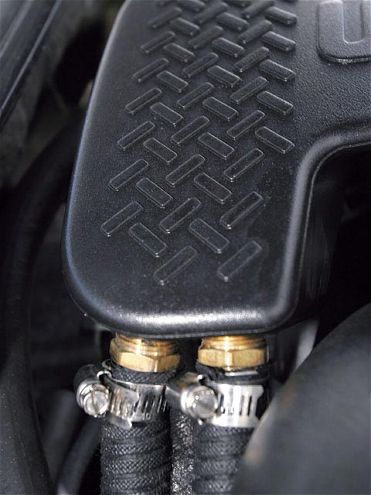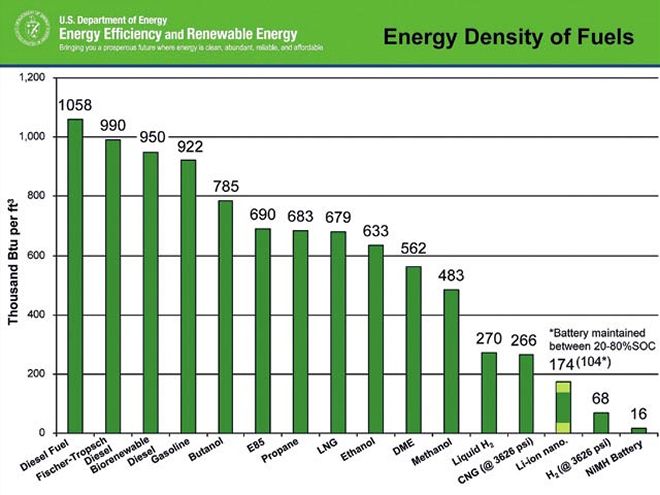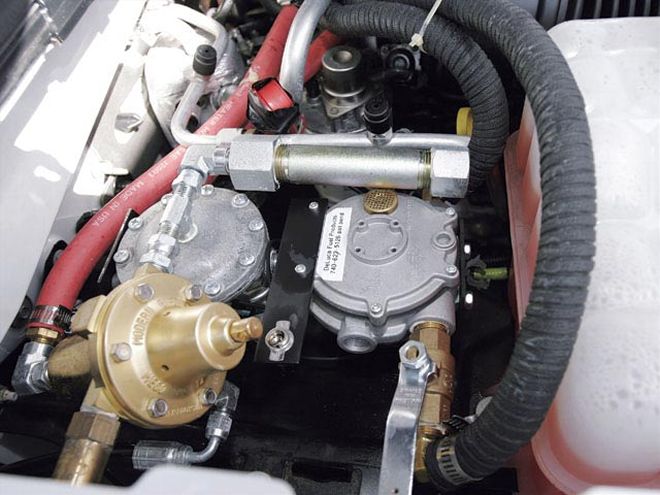
| diesel Natural Gas Injection filler Connection
Diesel is great by itself, but when it pairs up with compressed natural gas (CNG) it is outstanding. Traditionally, diesel performance meant more fuel plus more air equals more power. CNG changes this equation slightly since it makes what you already have more efficient. When fuel is ignited in a vehicle only powered by diesel, not all the oxygen is burned. With CNG fumigation (injection) the engine burns the diesel fuel and oxygen more completely. If you get one of these setups on your ride, you will be able to see and feel this improvement.
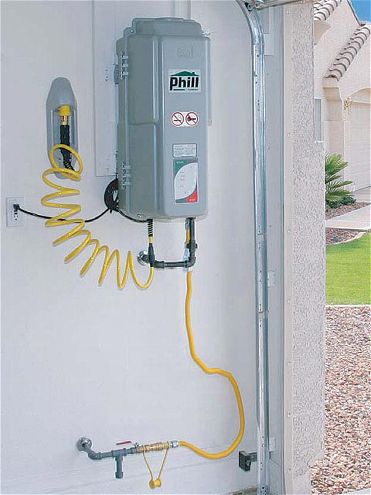
| The flow rate of the Phill by FuelMaker is 0.42 gasoline gallon equivalent/hour (GGE). The inlet pressure is 0.25 to 0.50 pounds per square inch gauge (PSIG) while the outlet pressure is 3,600 PSIG (compensated to 70 degrees Fahrenheit).
The cool thing about CNG is the infrastructure is already in place. It's literally at your doorstep. The only thing you need is a compressor. FuelMaker is a company from Canada who can get you set up. They have a unit called the Phill. Although it might seem pricey up-front, if you went in on it with friends it is possible, plus there are tax incentives to sweeten the deal. The price and availability of compressed CNG varies greatly from state to state. A report from the Department of Energy took the average fuel prices from across the country and found CNG was half the price of diesel fuel. Propane, on the other hand, was right in the middle of the two, being more expensive than CNG, but less expensive than diesel. Some people run both CNG and propane. This way they can be more flexible to changing energy prices. Detonation is less likely with CNG compared to propane because CNG has a higher octane (130 for CNG and 104 for propane).
The next thing you need is a tank. These too are expensive initially, yet in time they will pay for themselves and more provided CNG prices stay low, or you have your own methane (what CNG is made of) source. The tank can be made of steel, aluminum, or carbon fiber. Keep an eye on Ebay for a good deal. Finally, the last piece of the puzzle is the regulator, which transfers the CNG from the tank into the engine. The regulator takes the gas, which is compressed to as much as 3,600 psi and reduces the pressure to the point that the engine has to draw it in. Engine coolant is used to heat the CNG at the regulator to get it to expand. The flow of CNG starts after idle and increases due to vacuum pressure. The CNG/diesel ratio the engine burns is up to 2.5:1, respectively.
Jeff Dean recently took First Place in the 2008 Diesel Power Challenge fuel economy test thanks to CNG fumigation. His Duramax-powered Chevy got 38 mpg (only counting diesel burned) while his closest competitor got only 25 mpg. The photos in this article are from Jeff's truck as he ran it in the competition. His setup had the regulator unit under the hood, but many people have switched to mounting it in the truck bed since there is more space back there. Another good thing about installing it in the bed is you don't need a long, high-pressure line going from the tank to the regulator.
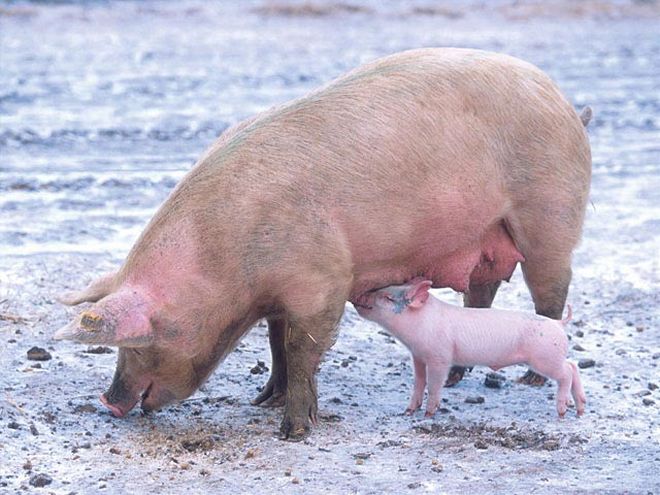
| CNG (methane) is produced naturally by livestock, humans, and landfills. If you have access to one of these energy producers, capture the gas and put it in your tank.
What is CNG?Compressed natural gas is mostly methane (CH4), but when it gets to your house it also contains ethane, propane, nitrogen, helium, carbon dioxide, hydrogen, hydrogen sulfide, and water vapor. It is relatively safe since it does not cause cancer in humans or corrosion in fuel systems. Landfills, livestock manure, and the earth give off methane gas. Some companies capture it and then sell it.
 | diesel Natural Gas Injection filler Connection
Diesel is great by itself, but when it pairs up with compressed natural gas (CNG) it is outstanding. Traditionally, diesel performance meant more fuel plus more air equals more power. CNG changes this equation slightly since it makes what you already have more efficient. When fuel is ignited in a vehicle only powered by diesel, not all the oxygen is burned. With CNG fumigation (injection) the engine burns the diesel fuel and oxygen more completely. If you get one of these setups on your ride, you will be able to see and feel this improvement.
| diesel Natural Gas Injection filler Connection
Diesel is great by itself, but when it pairs up with compressed natural gas (CNG) it is outstanding. Traditionally, diesel performance meant more fuel plus more air equals more power. CNG changes this equation slightly since it makes what you already have more efficient. When fuel is ignited in a vehicle only powered by diesel, not all the oxygen is burned. With CNG fumigation (injection) the engine burns the diesel fuel and oxygen more completely. If you get one of these setups on your ride, you will be able to see and feel this improvement.
 | The flow rate of the Phill by FuelMaker is 0.42 gasoline gallon equivalent/hour (GGE). The inlet pressure is 0.25 to 0.50 pounds per square inch gauge (PSIG) while the outlet pressure is 3,600 PSIG (compensated to 70 degrees Fahrenheit).
The cool thing about CNG is the infrastructure is already in place. It's literally at your doorstep. The only thing you need is a compressor. FuelMaker is a company from Canada who can get you set up. They have a unit called the Phill. Although it might seem pricey up-front, if you went in on it with friends it is possible, plus there are tax incentives to sweeten the deal. The price and availability of compressed CNG varies greatly from state to state. A report from the Department of Energy took the average fuel prices from across the country and found CNG was half the price of diesel fuel. Propane, on the other hand, was right in the middle of the two, being more expensive than CNG, but less expensive than diesel. Some people run both CNG and propane. This way they can be more flexible to changing energy prices. Detonation is less likely with CNG compared to propane because CNG has a higher octane (130 for CNG and 104 for propane).
The next thing you need is a tank. These too are expensive initially, yet in time they will pay for themselves and more provided CNG prices stay low, or you have your own methane (what CNG is made of) source. The tank can be made of steel, aluminum, or carbon fiber. Keep an eye on Ebay for a good deal. Finally, the last piece of the puzzle is the regulator, which transfers the CNG from the tank into the engine. The regulator takes the gas, which is compressed to as much as 3,600 psi and reduces the pressure to the point that the engine has to draw it in. Engine coolant is used to heat the CNG at the regulator to get it to expand. The flow of CNG starts after idle and increases due to vacuum pressure. The CNG/diesel ratio the engine burns is up to 2.5:1, respectively.
Jeff Dean recently took First Place in the 2008 Diesel Power Challenge fuel economy test thanks to CNG fumigation. His Duramax-powered Chevy got 38 mpg (only counting diesel burned) while his closest competitor got only 25 mpg. The photos in this article are from Jeff's truck as he ran it in the competition. His setup had the regulator unit under the hood, but many people have switched to mounting it in the truck bed since there is more space back there. Another good thing about installing it in the bed is you don't need a long, high-pressure line going from the tank to the regulator.
| The flow rate of the Phill by FuelMaker is 0.42 gasoline gallon equivalent/hour (GGE). The inlet pressure is 0.25 to 0.50 pounds per square inch gauge (PSIG) while the outlet pressure is 3,600 PSIG (compensated to 70 degrees Fahrenheit).
The cool thing about CNG is the infrastructure is already in place. It's literally at your doorstep. The only thing you need is a compressor. FuelMaker is a company from Canada who can get you set up. They have a unit called the Phill. Although it might seem pricey up-front, if you went in on it with friends it is possible, plus there are tax incentives to sweeten the deal. The price and availability of compressed CNG varies greatly from state to state. A report from the Department of Energy took the average fuel prices from across the country and found CNG was half the price of diesel fuel. Propane, on the other hand, was right in the middle of the two, being more expensive than CNG, but less expensive than diesel. Some people run both CNG and propane. This way they can be more flexible to changing energy prices. Detonation is less likely with CNG compared to propane because CNG has a higher octane (130 for CNG and 104 for propane).
The next thing you need is a tank. These too are expensive initially, yet in time they will pay for themselves and more provided CNG prices stay low, or you have your own methane (what CNG is made of) source. The tank can be made of steel, aluminum, or carbon fiber. Keep an eye on Ebay for a good deal. Finally, the last piece of the puzzle is the regulator, which transfers the CNG from the tank into the engine. The regulator takes the gas, which is compressed to as much as 3,600 psi and reduces the pressure to the point that the engine has to draw it in. Engine coolant is used to heat the CNG at the regulator to get it to expand. The flow of CNG starts after idle and increases due to vacuum pressure. The CNG/diesel ratio the engine burns is up to 2.5:1, respectively.
Jeff Dean recently took First Place in the 2008 Diesel Power Challenge fuel economy test thanks to CNG fumigation. His Duramax-powered Chevy got 38 mpg (only counting diesel burned) while his closest competitor got only 25 mpg. The photos in this article are from Jeff's truck as he ran it in the competition. His setup had the regulator unit under the hood, but many people have switched to mounting it in the truck bed since there is more space back there. Another good thing about installing it in the bed is you don't need a long, high-pressure line going from the tank to the regulator.
 | CNG (methane) is produced naturally by livestock, humans, and landfills. If you have access to one of these energy producers, capture the gas and put it in your tank.
What is CNG?
| CNG (methane) is produced naturally by livestock, humans, and landfills. If you have access to one of these energy producers, capture the gas and put it in your tank.
What is CNG?